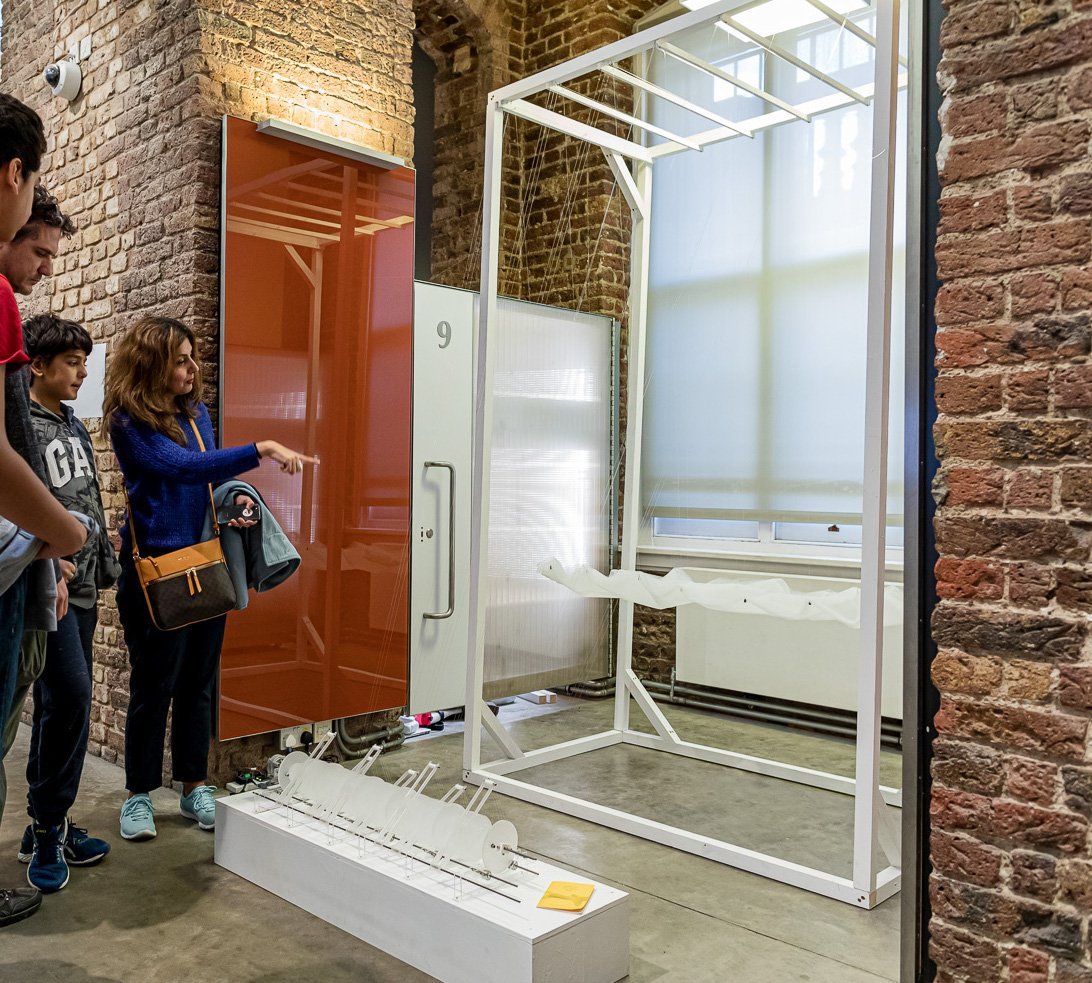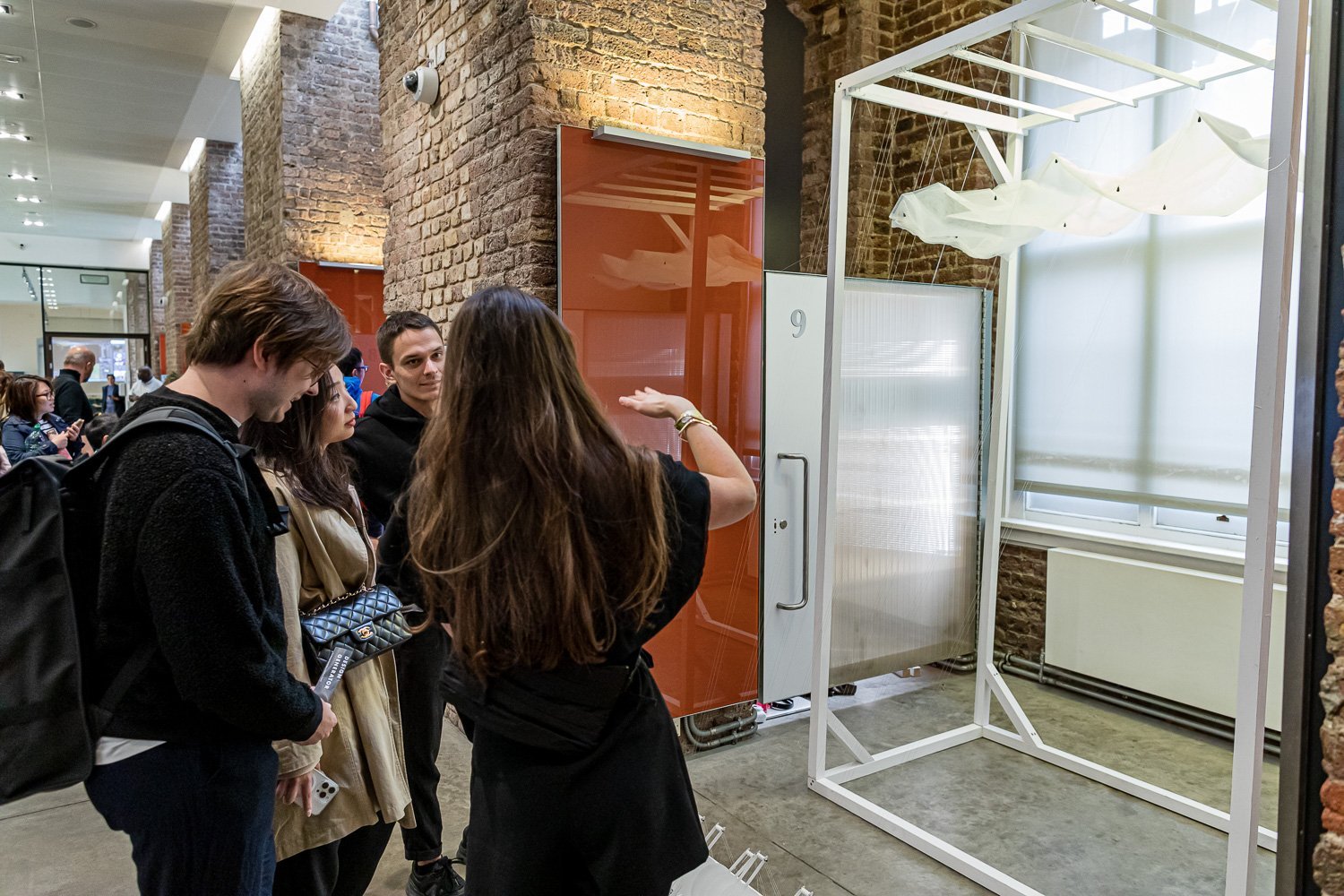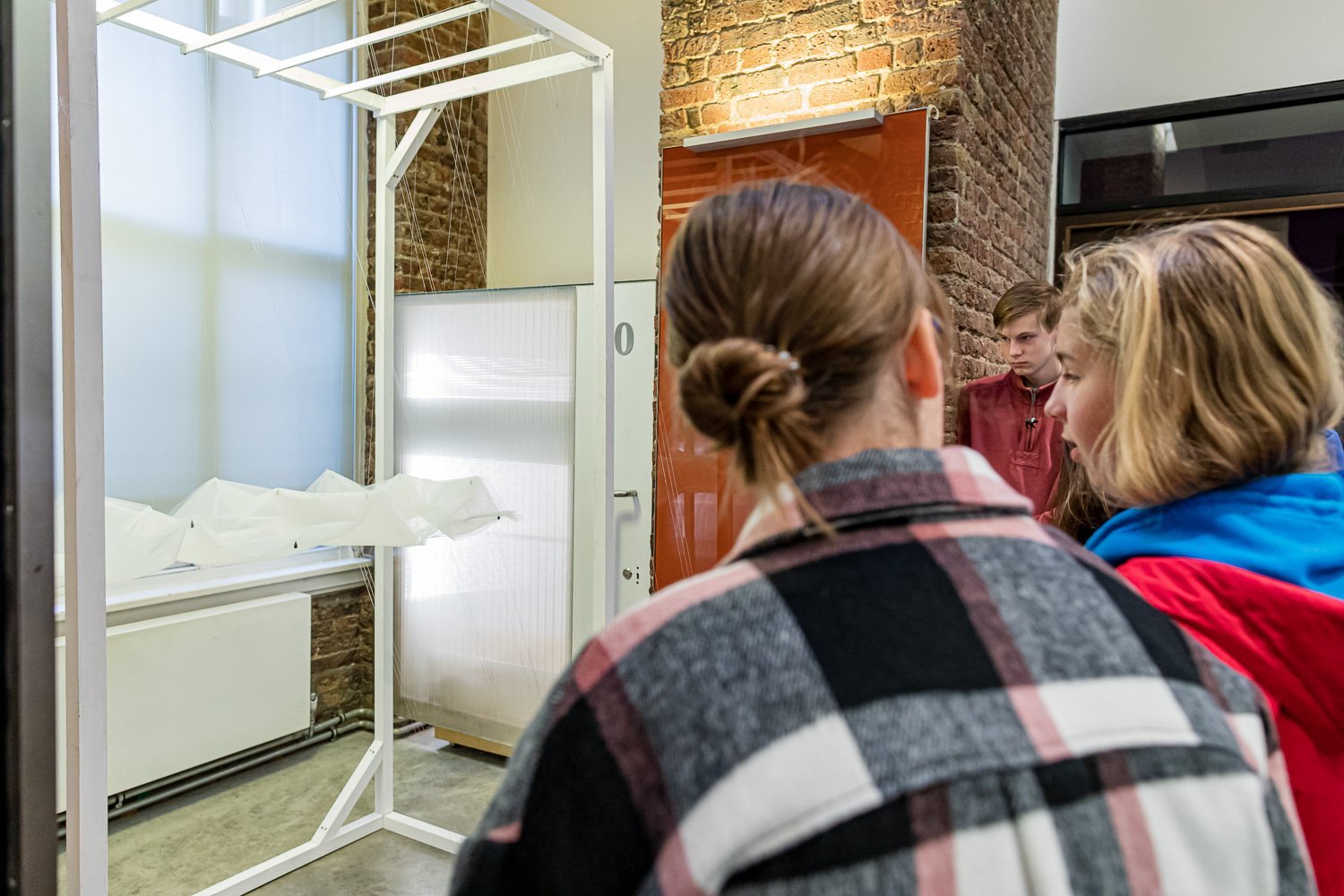Tidal Data Visualisations - Kinetic Sculpture
372.5 ~ Dublin Bay, Installed at 1 Windmill Lane, Dublin, Commissioned by The Eco Show Boat and funded by The Irish Arts Council
372.5 ~ is a series of kinetic sculptures that transforms the invisible dance of tidal forces into a tangible experience. Designed and built by the artist, this work uses technology and open-source data to capture the sublime essence of nature’s ebb and flow, focusing on the effortless distribution of water over a 6-hour tidal period (372.5 minutes).
Utilising open source tidal information, the installation is a physicalisation of data that employs a system of pulleys and weights, inspired by historical tidal measurement methods, to recreate the tides' current behaviour. The vertical movement of fabric is controlled by tidal data, while the x-axis motion is driven by a sinusoidal cam-shaft designed by the artist, drawing inspiration from the ingenious Doodson Lege device. This intricate mechanism encapsulates the hyperobject nature of tides, revealing their vast, interconnected scale and temporal depth.
372.5 ~ delves into the poetic and profound, subtly addressing the themes of climate change and human impact through the lens of environmental data. The piece translates abstract tidal information into a dynamic, accessible visualisation, seamlessly bridging the digital and physical realms. It is a continuation of O’Leary’s exploration into hyperobjects, making the unseen rhythms of nature perceptible and deeply engaging.
Rooted in the artist’s personal connection to the sea in Howth, Dublin, where she was exposed to these tidal shifts from a young age, 372.5 ~ invites viewers to contemplate our complex relationship with nature. The sea, seen not merely as a backdrop or resource, but as a powerful entity of vast geographical and temporal scale, gains a voice through this work. The artist's experiences of sailing, swimming, and paddle-boarding in these waters infuse the piece with authenticity and intimacy. This installation prompts reflection on the patterns in nature that we understand, and those that remain elusive. By making these imperceptible data points visible, 372.5 ~ challenges viewers to see beyond the surface, fostering a deeper awareness of the environmental crisis we face and our role within it.
Below are more installations of the various size and set up for the different tidal data sets used from around the world, including Dublin Bay, River Thames Estuary and Bay of Fundy, USA.
Height: 9 metres, Width 3 metres, Depth 4 metres
372.5 ~ Dublin Bay is a visualisation of the effortless distribution of water during the 6 hour tidal period. Using tidal charts from the Dublin Bay where The River Liffey meets the Irish Sea, the installation uses a system of pulleys and weights inspired by the historical methods of tidal measurement to recreate its current behaviour. This piece is a continuation of research into hyperobjects and how abstract data can be transformed using technology to make natures complexities tangible.
372.5~Howth
Exhibited in St. James Hatcham Church, Goldsmiths University of London
Height 10 metres, width 3 metres, depth 2 metres
372.5 ~ Bay of Fundy, Eastport Maine, USA
Exhibited at Tides Institute and Museum of Art as part of my residency in October, 2023
data visualisation of the infamous tides in the Bay of Fundy. This kinetic sculpture is driving by tidal data that is passed into an Arduino board and powered by a DC Motor. Installed here at Tides Institute and Museum of Art in Eastport, Maine, USA
372.5 ~ Howth
Exhibited at hARTslane Gallery, London
Height: 2 metres, Width 1.5 metres, Depth 2 metres
V & A Digital Design Festival
This set up was 1.5m wide and 1m deep with a 2.4m high frame. The plinth is 30cm with the cam-shaft mechanism on top.



